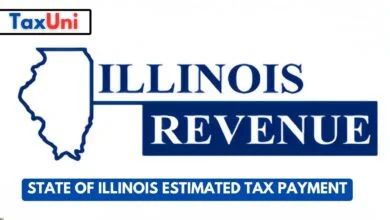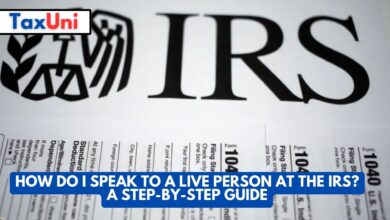Flexible Spending Accounts
A Flexible Spending Account, or FSA, is one of several tax-advantaged financial accounts. This article provides everything you want to know about FSAs.

Contents
A Flexible Spending Account (FSA) is a tax-advantaged financial account that can save you payroll taxes on health and dependent care expenses. It’s an option for employees eligible to participate in a company’s healthcare plan or those who are self-employed. An FSA allows you to set aside pre-tax money for qualifying medical, dental, and vision expenses in a savings account. In addition, you may be able to use these funds to pay for out-of-pocket dependent care costs.
An FSA can help you save more than 30 percent on your medical bills by allowing you to use tax-free dollars. The best part is it empowers you to spend smarter by helping you keep more of your hard-earned money.

Flexible Spending Account Eligibility
The key is to be aware of your eligibility and the rules and take advantage of this account’s tax benefits. For example, an FSA can be used to buy over-the-counter items like allergy medications and first-aid supplies, or it can be used to cover deductibles and copayments on insurance plans. It’s also important to know that FSA funds are subject to a “use it or lose it” rule, which means you must spend your remaining balance on a covered expense by the end of the year or forfeit it. Many employers have grace periods for missed payments, but if you miss the deadline, all of your remaining funds will be lost. If you’re unsure whether an FSA is right for you, it’s best to research and talk to a financial advisor. They can help you determine if the account fits your needs and recommend the best type of flexible spending account for you.
There are two types of FSAs: a healthcare FSA and a dependent care FSA. A healthcare FSA lets you set aside pre-tax money to cover medical expenses, over-the-counter items, and dental care. A dependent care FSA lets you set aside money to pay for daycare, preschool, and other dependent care expenses. Both accounts offer various products and services that can be paid for with FSA funds. These include prescriptions, over-the-counter items, and diabetes supplies. Some of these products are available online through an FSA store, which provides a convenient one-stop shopping experience for eligible purchases.

Difference between FSA and HSA
FSAs and HSAs let you set pre-tax money aside for medical expenses, but there are some differences between the two. Qualifications, contribution limits, rollover rules, changing contribution amounts, and withdrawal penalties differ. HSAs are more flexible, allowing you to invest your funds and build up tax-free savings for future medical expenses. They also have higher limits and contribution rollover, making them a better option if you can qualify. However, you’ll have to have a high-deductible health insurance plan (HDHP) or lower your insurance deductible to use an HSA. This means you need to be able to save enough to pay for your HDHP’s deductible and still have extra money to cover out-of-pocket costs.
Another important difference between an FSA and an HSA is that FSAs are employer-owned accounts, while an HSA is a member-owned account. An employee’s FSA is only available when they’re employed by that company, while an HSA can be opened for any individual who has an eligible HDHP and a qualified health plan. Unlike FSAs, unused funds in an HSA don’t disappear at the end of the year. They can be carried over into the next year without affecting your contribution limit or used during a grace period after the end of the year.
In addition, an HSA’s accumulated funds don’t expire when you’re older. That can be a huge benefit if you save for large medical expenses in retirement, such as vision and dental care. You can also open a limited-purpose FSA, which allows you to pay for dental and vision care expenses with pre-tax dollars. This can be a great way to save on those expenses, but only if your employer allows it.
In most cases, an HSA is more flexible than an FSA, but you need an HDHP to qualify. In addition, an HSA has higher deductibles than FSAs, so it’s best for people who are financially prepared to save for those deductibles and are willing to pay the extra taxes on their HSAs. In any case, you should make sure that the plan you choose offers the benefits you need and is the right fit for your circumstances.

Types of Flexible Spending Accounts
There are several different types of FSAs, and they all come with their own annual contribution limits and eligibility requirements. There are healthcare FSAs, limited-purpose FSAs, and dependent care FSAs. The most common type of FSA is the health FSA, which helps pay for copays, deductibles, and other out-of-pocket medical expenses. Employees can use their medical FSA money for things like prescriptions, over-the-counter drugs and supplements, veterinary services, lab work, diagnostic tests and procedures, medical conferences, and even medical remodeling (if you have an illness or disability, you may need to modify your home).
Another popular type of flexible spending account is the limited-purpose FSA, which covers only dental and vision care. This is usually paired with a health savings account (HSA). A dependent care FSA, or child care HSA, allows employees to save on their costs by paying for childcare and other employment-related dependent care expenses with pre-tax dollars. This benefit is often combined with a federal childcare tax credit. For 2025, the maximum amount that can be contributed to a dependent care FSA is $2,500 for married couples filing separately and $5,000 for single people and married couples filing jointly.Some employers offer a “carry over” amount for these plans, which means that if you leave your FSA funds unused at the end of the plan year, you can roll them over to the next year. However, the carryover amount can vary widely from plan to plan.





